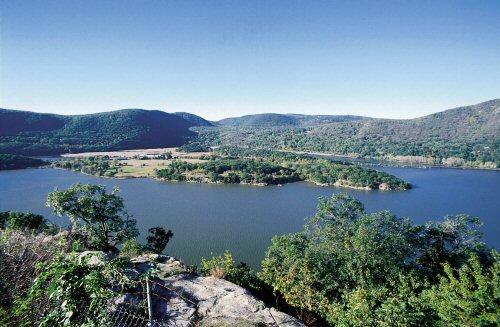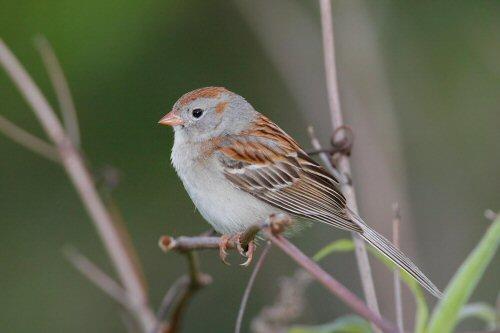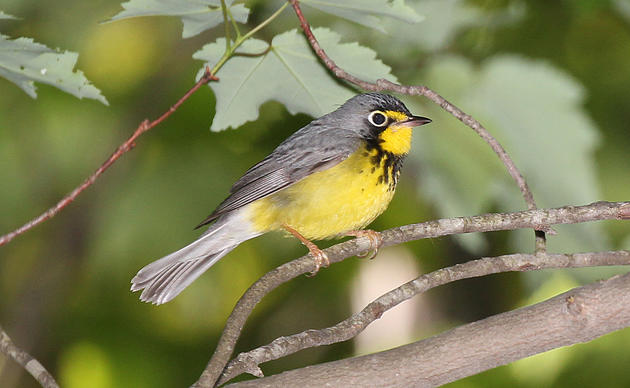Hudson River Valley Conservation
Birds in the Hudson River Valley

The Hudson River Valley supports an impressive diversity of birds, including many species of regional and continental conservation concern. Nearly two hundred species breed in and numerous others migrate through the Hudson Valley. The high regional diversity is likely a result of the rich variety of habitats and the geographic location of the Hudson Valley. While some birds are doing quite well and some have even expanded their ranges, there are others that are experiencing considerable threats, population declines, and/or have very small populations or limited ranges. These threatened birds are conservation priorities and the actions and decisions of land owners, managers, and planners can make a difference in conserving them.
What Birds are Conservation Priorities?
These priority birds were identified by assessing the latest information from continental, national, and regional bird planning initiatives and state and federal lists of threatened and endangered species.

A species is included on the Hudson River Valley Priority Bird list if it is found in the Hudson Valley and on one of the following priority lists: State-listed Endangered, Threatened, or Special Concern; Audubon Watchlist (2007); Partners In Flight (PIF, 2005) - Continental Concern, Regional Concern, Continental Stewardship, Regional Stewardship in any of the Bird Conservation Regions in the Hudson Valley (BCRs 13, 14, 28, and 30); North Atlantic Shorebird Plan - Highly Imperiled or Species of High Concern; Mid-Atlantic, New England, Maritime Waterbird Working Group - High Concern, Moderate Concern
Managing Habitats for Suites of Species
In most cases, landowners and managers will not be interested in managing habitats for a single species, but rather for groups of species, such as "grassland birds." In fact, many priority species will use habitats with various characteristics as long as the general habitat type is correct, e.g., a grassland, a forest, or a shrubland. Species that are relatively more common and/or use a broader range of habitats are more likely to respond to habitat management than are rare species or species with very narrow habitat tolerances. For example, a well managed grassland in a mostly open or agricultural landscape is likely to attract and be used by Bobolinks and Savannah Sparrows, but it might not attract breeding Northern Harriers even if management was tailored to that species. Similarly, a well managed mature forest may not attract Cerulean Warblers, but it very likely will attract at least a couple of the other forest species on the list, such as Wood Thrush or Eastern Wood-Pewee. For these reasons, the best option is often simply to manage for a general habitat type given the size and condition of the property and the characteristics of the surrounding landscape.
Determining What Type of Habitat to Create
One of the most difficult questions for landowners to answer is: What type of bird habitat should I create on my property? An example might be the best way to explain the difficulty of this question, the options landowners have, and why their decision matters for at-risk birds. Perhaps a landowner owns a 10-acre plot that is reverting from an old pasture into a young forest. The landowner has heard that grassland birds are a priority, so she thinks she might hydroaxe the whole 10 acres and restore it back to a grassland. If the property is in a mostly agricultural landscape and adjacent to large, open agricultural fields and grasslands, then restoring it to a grassland is probably the best option as far as priority birds are concerned, because it would help connect the existing fields and increase the attractiveness of the landscape to grassland birds in addition to providing 10 more acres of high-quality breeding habitat. Letting the property revert to a forest would have the opposite effect; it would fragment the existing grasslands, decreasing their attractiveness to grassland birds, and it would result in a forest patch that is too small to provide quality habitat for many forest-breeding birds.
If, however, the property is surrounded by mature forest in a landscape dominated by forest, it would be better to allow it to succeed into forest and maybe long-term to log it periodically to provide early-successional habitat that may be lacking in the landscape. This management decision would benefit forest birds by decreasing the fragmentation of the forest in the landscape while possibly providing successional forest habitat that many species need. In this case, managing the property as a grassland would contribute to forest fragmentation and create a small grassland in an inhospitable landscape that is not likely to be used by many grassland birds.
Landowners seeking guidance about improving suburban or urban habitats for birds should go to the Audubon at Home web site.
Where are the critical places to protect?
Twenty-five Important Bird Areas have been identified in the Hudson River Valley. The Important Bird Areas (IBA) program is an international bird conservation initiative with simple goals: to identify the most important places for birds and to conserve them. IBAs are identified according to standardized, scientific criteria. A site can be recognized as an IBA if it meets one of three state-level criteria, including sites regularly supporting 1) populations of at-risk species; 2) assemblages of species considered to be of regional responsibility; and 3) congregations of mixed species flocks. IBAs are priorities for land protection and conservation efforts. For further information on NY's IBA program and criteria, click here. For further information on why a particular site is an IBA, explore the National Audubon Society's full US IBAs map.
GIS shapefile of IBA boundaries are available
IBA boundaries are available in GIS format to be viewed in programs such as ArcView. The boundaries were created using high resolution orthophotos. If you are interested in receiving the IBA shapefile, read and complete the Data Release Agreement and return a completed and signed copy to the IBA contact.
Other things you can do to help
- Land owners and managers should contact their local County Extension or USDA NRCS office to learn about programs to help private landowners enhance wildlife habitat. There are a number of Farm Bill landowner incentive and cost-sharing programs to manage and restore habitats as well as the USFWS Partners for Fish and Wildlife Program. For information on the UWFS program, contact the Cortland, NY office at (607) 753-9334.
- If an IBA is in your town, attend a local planning board meeting and inquire about whether or not your town master plan and zoning benefit the protection of IBAs so that they are not vulnerable to development.
- Become an IBA advocate by Adopting an IBA
- Advocate for the protection of critical habitats and species by joining our Action Alert Network
- Keep track of your bird sightings in eBird.
Audubon New York received a grant from the Hudson River Estuary Program to support this project.
How you can help, right now
Donate to Audubon
Help secure the future for birds at risk from climate change, habitat loss and other threats. Your support will power our science, education, advocacy and on-the-ground conservation efforts.




